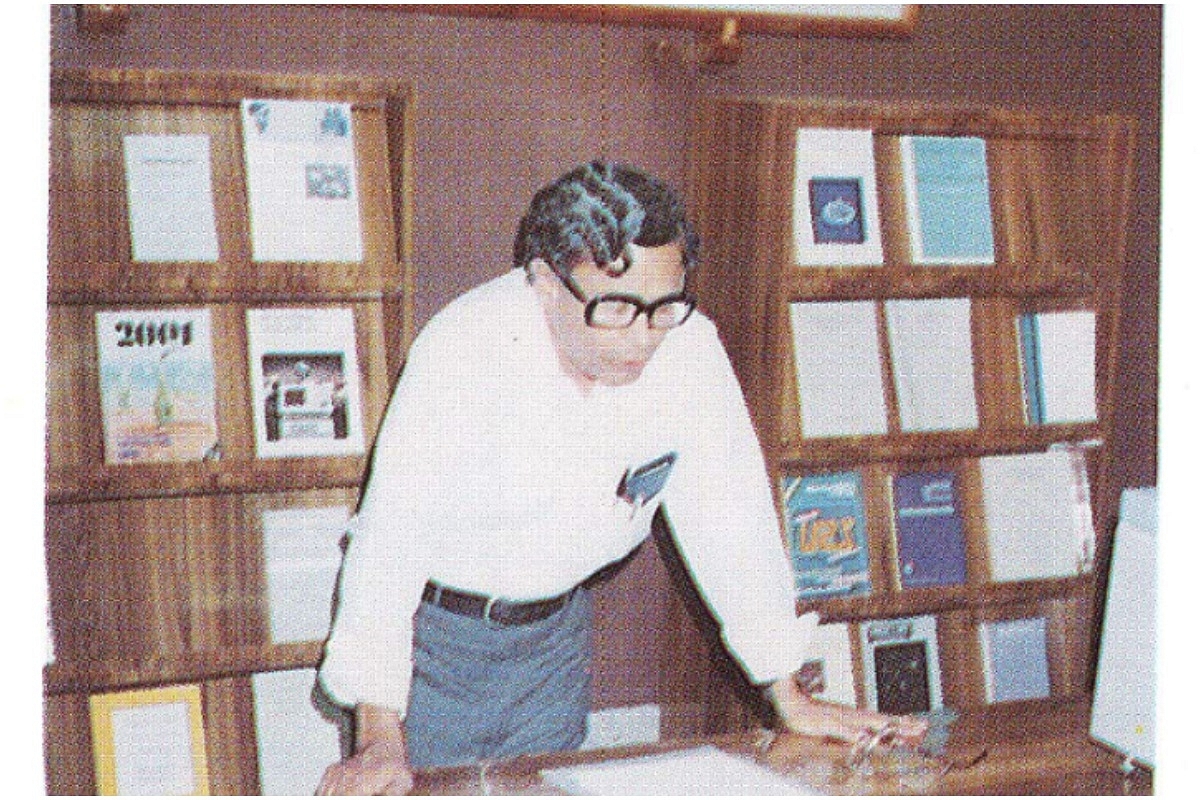Science
R Rajamohan, Who Led The First Asteroid Discoveries In Independent India, Is No More
- Professor Rajamohan had led Project Kalki — to look for asteroids, comets, and the then elusive tenth planet of the solar system. It led to the first discoveries of asteroids in independent India.

Professor R Rajamohan
Professor R Rajamohan, who was an astronomer at the Indian Institute of Astrophysics (IIA), Bengaluru, for decades, passed away Saturday (29 January).
“He is best known for his Kalki Project, which aimed to discover asteroids using the 48-cm Schmidt telescope in Kavalur VBO,” IIA Bengaluru said in a tweet announcing the news.
Rajamohan, then an associate professor at IIA Bengaluru, led the project and gave it the name “Kalki” — in Hindu mythology, Kalki is the prophesied tenth and final incarnation of the god Vishnu; and the astronomy team was in search of the tenth planet of the solar system beyond Pluto.
The Kalki group went about their work at the “Kavalur VBO,” which refers to the Vainu Bappu Observatory, located in Kavalur village in the Javadi Hills of Tamil Nadu. The facility is owned and operated by IIA Bengaluru.
“We report the discovery of a new asteroid, number 4130, from India,” read the first line of the paper, whose lead author was Rajamohan, published in the journal Current Science in 1989.
This was the first asteroid discovered in India in 104 years, after the discovery of five asteroids by British government astronomer Norman Robert Pogson between 1861 and 1885 from Madras Observatory (IIA’s earlier avatar).
Asteroid 4130 was, therefore, the first asteroid discovered from an Indian observatory in the twentieth century.
It took the team only two years since the initiation of Project Kalki to report the discovery of their first asteroid. It was named Ramanajun in honour of the great Indian mathematician Srinivasa Ramanujan (1887-1920). The members received the Astronomical Society of India Medal for their discovery.
Rajamohan’s team, which included the members Kamatchiappan Kuppuswamy, Venkatachala Moorthy, and Arvind Paranjpye, discovered six asteroids in all, which were named after Indian scientists — Ramanujan, Vainu Bappu, Mrinalini, Sarabhai, Gokumenon, and Bhattacharyya.
The names Gokumenon and Bhattacharyya were coined more recently. Rajamohan proposed in 2008 for two asteroids to be named after Professor J C Bhattacharyya and Professor M G K Menon. This was to recognise the support and encouragement of the two scientists to Project Kalki. Bhattacharya was the director of IIA Bengaluru and Menon, the chair of IIA’s governing council at the time.
The IAU Committee for Small Body Nomenclature approved the proposal and two asteroids were named Bhattacharyya and Gokumenon.
Similarly, Rajamohan’s team members were honoured by naming an asteroid after them. The asteroid discovered on 23 January 1990 was named 17446 Mopaku in honour of three Project Kalki members, stitching up the first two letters of their names Moorthy, Paranjpye, and Kuppuswamy.
During the late 1980s, Rajamohan was the editor of “VBT News,” a quarterly newsletter published by IIA Bengaluru. It was launched in October 1989 and dedicated to the 2.34 m Vainu Bappu Telescope (VBT). At that time, the VBT was the largest optical telescope in Asia and commanded the attention of Indian astronomers.
Today, the largest telescope in Asia is the 3.6 m Devasthal Optical Telescope, also in India and operated by the Aryabhatta Research Institute of Observational Sciences, Nainital.
The story about the workshop in the first edition of VBT News carried a picture of Rajamohan along with this cheeky description: “He, of course, has taken the advantage of being the organizer of the Workshop and the Editor of this News Bulletin by publishing his own photograph below.”
Nine editions of VBT News, between 1989 and 1991 with Rajamohan as the editor, are published as part of IIA Bengaluru’s digital archive.
Further, Rajamohan represented India at the NASA International Near-Earth-Object Detection Workshop in the spring of 1991 because of his excellent record with asteroids.
The workshop sought to assess the nature of the threat of asteroid impact upon Earth and how the planet could deal with such a potentially catastrophic event if it came to pass.
It was conducted by the National Aeronautics and Space Administration (NASA) at the request of the United States (US) House of Representatives, no less.
The House Committee on Science, Space and Technology had recommended international participation and, thus, Rajamohan came to be picked in the 24-member squad. He was one of only six astronomers chosen for the workshop from outside of the US.
Rajamohan was a member of the International Astronomical Union and, in India, of the Astronomical Society of India.
The astronomer shared a long and close relationship with IIA, so much so that his was the first doctoral thesis of the institute. He was then a student of Dr Bappu (1927-1982) himself, the namesake of the IIA telescope and observatory based in Tamil Nadu, which was the basis for Rajamohan’s landmark asteroid discoveries and other stellar astronomical work.
Then using the 51 cm Bhavnagar telescope in Kodaikanal to pursue a spectroscopic study of the Scorpio-Centaurus (stellar) association, and later, the Kavalur observatory to round up asteroids, Professor Rajamohan leaves behind a bright legacy from a relatively early chapter of Indian astronomy.
Introducing ElectionsHQ + 50 Ground Reports Project
The 2024 elections might seem easy to guess, but there are some important questions that shouldn't be missed.
Do freebies still sway voters? Do people prioritise infrastructure when voting? How will Punjab vote?
The answers to these questions provide great insights into where we, as a country, are headed in the years to come.
Swarajya is starting a project with an aim to do 50 solid ground stories and a smart commentary service on WhatsApp, a one-of-a-kind. We'd love your support during this election season.
Click below to contribute.
Latest